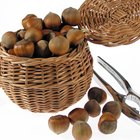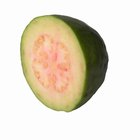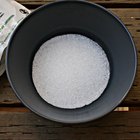
Move over, prescription drugs. There's another cholesterol fighter in town, and you might already have it in your kitchen. Laboratory animals who ingested orange peels had a 32 to 40 percent decrease in LDL levels during a study performed by the Journal of Agricultural and Food Chemistry.
The cholesterol-lowering polymethoxylated flavones (PMFs) are not the only benefit of orange peels. Orange peels also are high in Vitamin C, calcium and pectin, a carbohydrate with probiotic properties. Some people believe it is an effective appetite suppressant. It also is used to aid digestion and treat colds. Experiment with different recipes to incorporate this nutrient-rich skin into your diet.
Wash your orange. An unwashed orange may contain chemicals, toxins and bacteria.
Cut the orange into at least four slices. Use your hands to remove the peel from each slice. Set the slices aside.
Grate the peels, using a grater, sharp knife, zester or vegetable peeler. Use the grated peel in your food by tossing it into a homemade batch of trail mix; adding it to a salad or desert; sneaking it into a smoothie; sprinkling it into a drink; dropping it into a bowl of oatmeal; or baking it into a cakes, cookies, brownies and pies.
Dehydrate the peels. Use a food dehydrator for 8 to 12 hours, at a temperature of 130 to 135 degrees Fahrenheit. Fold the dried pieces in half. If they stick together, they need additional time in the dehydrator.
Steep the peels in a hot cup of tea. Add a dash of ginger and honey to fight cough, cold and flu symptoms.
Cook the orange peels in sugar. This is known as candying. Drizzle your candied orange peels with chocolate or use them to top cakes and cupcakes.
Related Articles

Foods From Rainforest Plants

Nutrition Information on Blueberries

How to Eat Hazelnuts

How to Peel Guava

What Foods Provide Calcium D-Glucarate?

Asian Secret to Removing Cellulite

How to Use Wheatgrass for Washing Hair

How to Cook Papaya

Can Oranges Cause Acne?

Can You Eat Peeled Potatoes After ...

Grapefruit Skin Benefits

Can You Eliminate Gas and Bloating With ...

Best Fruit Juices to Cleanse the Colon

How to Get Rid of Purple Scars

Why Pears Turn Brown When Pureed

Baked Cubed Squash

How to Make Xylitol Toothpaste

Papaya & Acne

How to Make a Grapefruit Facial Mask

Avocado Serving Size & Nutrition
References
Writer Bio
Missy Nolan has been a writer since 2003. She has contributed articles to several online publications and websites, including Catalogs.com. Nolan's poetry has been published in "Teen Ink" and she was the 2002 winner of the "What Matters" essay contest. She is currently completing her Bachelor of Science in public health.
Photo Credits
Medioimages/Photodisc/Photodisc/Getty Images